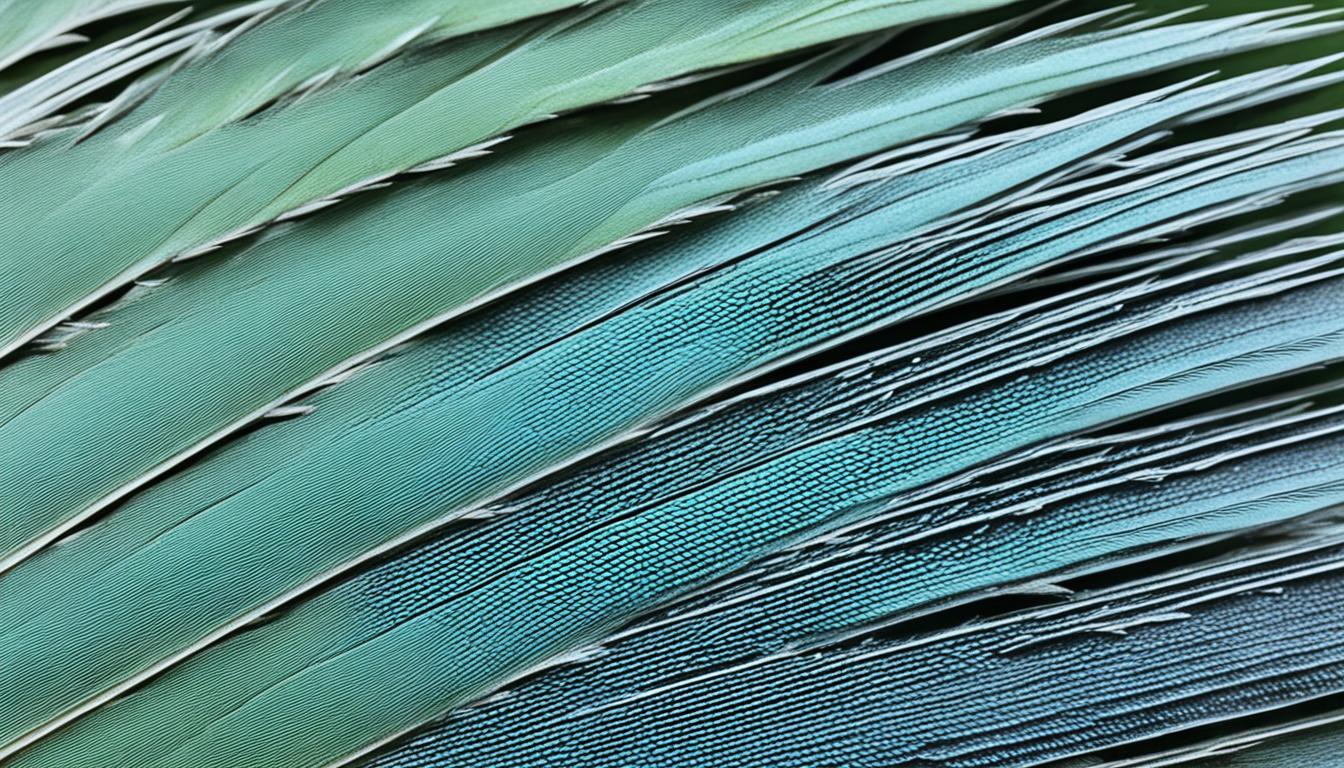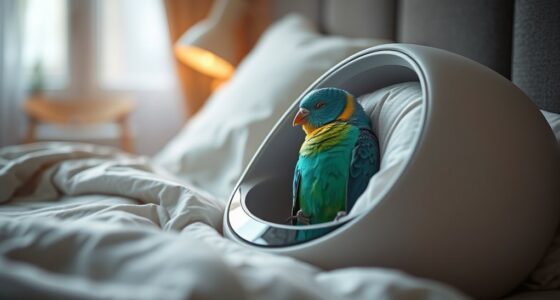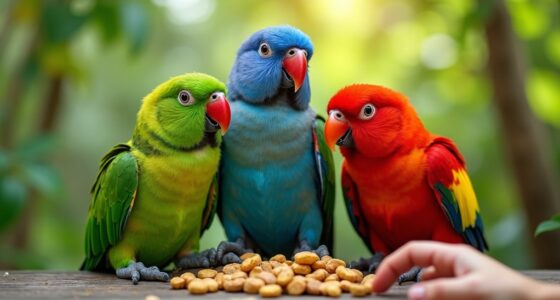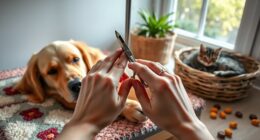Have you ever thought about how amazing it is that bird feathers can actually grow back even after they are lost or damaged? It’s fascinating! Whether it’s because of feather plucking, stress, molting, excessive grooming, or infections, bird feathers possess the incredible ability to regrow. This remarkable process of feather regrowth, also referred to as avian molting, can take anywhere from 1 to 12 months, depending on different factors like the reason for the feather loss and the bird’s overall health. Curious to learn more about this fascinating phenomenon? Keep reading to uncover the secrets behind these miraculous feathered creatures!
Key Takeaways:
- Bird feathers have the ability to regrow after being lost or damaged.
- Feather regrowth can take anywhere from 1 to 12 months.
- Factors such as the cause of feather loss and the bird’s overall health can impact the regrowth process.
- Feather plucking may require veterinary assistance and may delay the regrowth process.
- Supporting bird wellness through proper nutrition, preventive healthcare, enrichment activities, and behavior training can promote healthy feather regrowth.
Understanding the Process of Feather Regrowth
Molting is a natural process where birds shed worn-out feathers and grow new ones. It plays a crucial role in maintaining their flight capabilities and overall feather health. During molting, feathers are typically replaced in a symmetrical pattern, ensuring that birds can maintain their balance and maneuverability in the air. This symmetrical molting pattern is a fascinating mechanism that allows birds to continuously renew and optimize their feather coat.
When trying to determine whether a bird is molting or experiencing feather plucking, it’s important to examine their feathers closely. Molting feathers will often show signs of recent growth, with intact shafts and vibrant colors. In contrast, birds that engage in feather plucking may have bald spots or asymmetrical patterns, indicating deliberate removal of feathers.
The distinction between molted feathers and plucked feathers can also be observed in the types of feathers present. Primary feathers, which are responsible for flight, are typically molting on both sides of the bird’s body to maintain balance. In contrast, plucked feathers may be missing in specific areas and may not follow this symmetrical pattern.
Understanding the difference between molting and feather plucking is crucial in identifying the cause of feather loss and promoting proper regrowth.
To visually demonstrate the symmetrical molting pattern and differentiate it from feather plucking, please refer to the table below:
| Feather Characteristics | Molting | Feather Plucking |
|---|---|---|
| Feather Shaft | Intact | May be broken or irregular |
| Feather Colors | Vibrant | May appear faded or discolored |
| Symmetry | Feathers replaced bilaterally | Asymmetrical pattern |
The table above provides a visual reference to distinguish between molting feathers and those affected by feather plucking. It can assist bird owners and enthusiasts in identifying the cause of feather loss and promoting proper regrowth.
Remember, the process of feather regrowth is a natural and essential part of a bird’s life. Understanding how feathers molt and being able to differentiate between normal molting and feather plucking can help ensure the health and well-being of our feathered friends.
Assisting Feather Regrowth in Birds
In cases where bird feathers are damaged and require assistance in regrowth, a process called “imping” can be utilized. Imping involves replacing damaged feathers with donor feathers from birds of the same species, size, and age. The donor feathers are prepared by attaching small dowels inside the feather shafts, creating a bridge between the new feather and the recipient.
The recipient bird is then anesthetized, and the broken feathers are removed before the donor feathers are carefully glued into the appropriate shafts. Imped feathers provide temporary support until the next molting cycle, during which they will be naturally replaced.
Aside from imping, it is essential to take proactive steps to ensure bird wellness care, which can further promote healthy feather growth and regrowth. Regular visits to an avian vet can help identify any underlying health issues that may hinder feather regrowth. A qualified avian vet can also provide recommendations for proper nutrition and treatments to support feather recovery.
Enrichment activities are also crucial for bird wellness care. Providing interactive toys, perches of different textures, and opportunities for mental stimulation can help divert a bird’s attention from feather plucking and encourage healthy behaviors.
Behavior training is yet another element of bird wellness care that can promote feather regrowth. Teaching birds desirable behaviors, such as foraging, targeting, and step-up commands, can redirect their energy and reduce stress, thus aiding in the overall wellness of their feathers.

In summary, imping is a valuable technique for assisting feather regrowth in birds. Combined with regular avian vet visits, bird wellness care practices, and a supportive environment, imping can contribute to a bird’s overall well-being and promote healthy feather regrowth.
Factors Affecting Feather Regrowth
Feathers are incredible structures that can regrow and regenerate. However, this regrowth process doesn’t always occur as expected, and in some cases, feathers may not regrow at all. Several factors can influence the regrowth of bird feathers, leading to permanent feather loss.
One of the main factors that can impede feather regrowth is the presence of bacterial and viral infections. These infections can cause significant damage to the feathers, making it impossible for them to fully regrow. For example, certain bacterial infections like feather folliculitis can result in severe feather follicle damage, preventing new feathers from emerging properly.
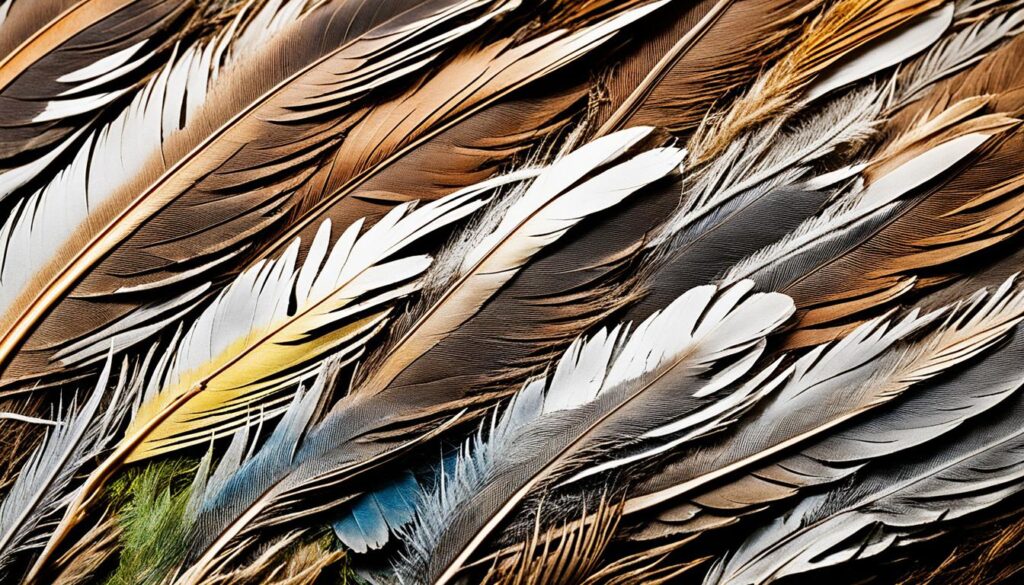
Internal diseases can also have a detrimental effect on feather regrowth. Conditions such as liver disease and kidney disease can disrupt the physiological processes necessary for feather regeneration. As a result, feathers may not regrow or may only partially regrow, leading to permanent feather loss.
Feather plucking is another cause of permanent feather loss. When birds engage in excessive feather plucking, they can damage the feather follicles. This damage hinders the regrowth of feathers and may inhibit the overall feather development process. It is crucial to address feather plucking early to mitigate the long-lasting effects it can have on feather regrowth.
Understanding the factors that can affect feather regrowth is essential for bird owners and avian enthusiasts. By identifying and resolving underlying issues such as bacterial and viral infections, internal diseases, and feather follicle damage, we can promote healthier feather regrowth in birds and prevent permanent feather loss.
Conclusion
Feather regrowth plays a crucial role in maintaining bird feather health and vitality. Understanding the factors that influence the feather recovery timeline and implementing proper parrot feather care strategies can greatly promote the regrowth process and ensure the well-being of our avian friends.
By prioritizing bird wellness and providing preventive healthcare, we can create a conducive environment for feather regrowth. Regular check-ups with an avian vet, along with vaccinations and appropriate parasite control, can address any underlying health issues that may hinder feather regrowth.
Enrichment activities are essential for stimulating physical and mental engagement in birds, boosting their overall well-being and promoting feather regrowth. Providing a variety of toys, perches, and interactive playtime can help alleviate stress and prevent destructive behaviors like feather plucking.
Lastly, a proper diet plays a crucial role in promoting feather regrowth. A balanced and nutritious diet rich in high-quality proteins, antioxidants, and essential fatty acids can provide the necessary building blocks for healthy feather growth. Consulting an avian nutritionist or researching reputable bird food brands can ensure that our feathered companions receive the best possible nutrition for optimal feather regrowth. Together, these strategies will promote feather regrowth, giving birds vibrant and healthy plumes.
